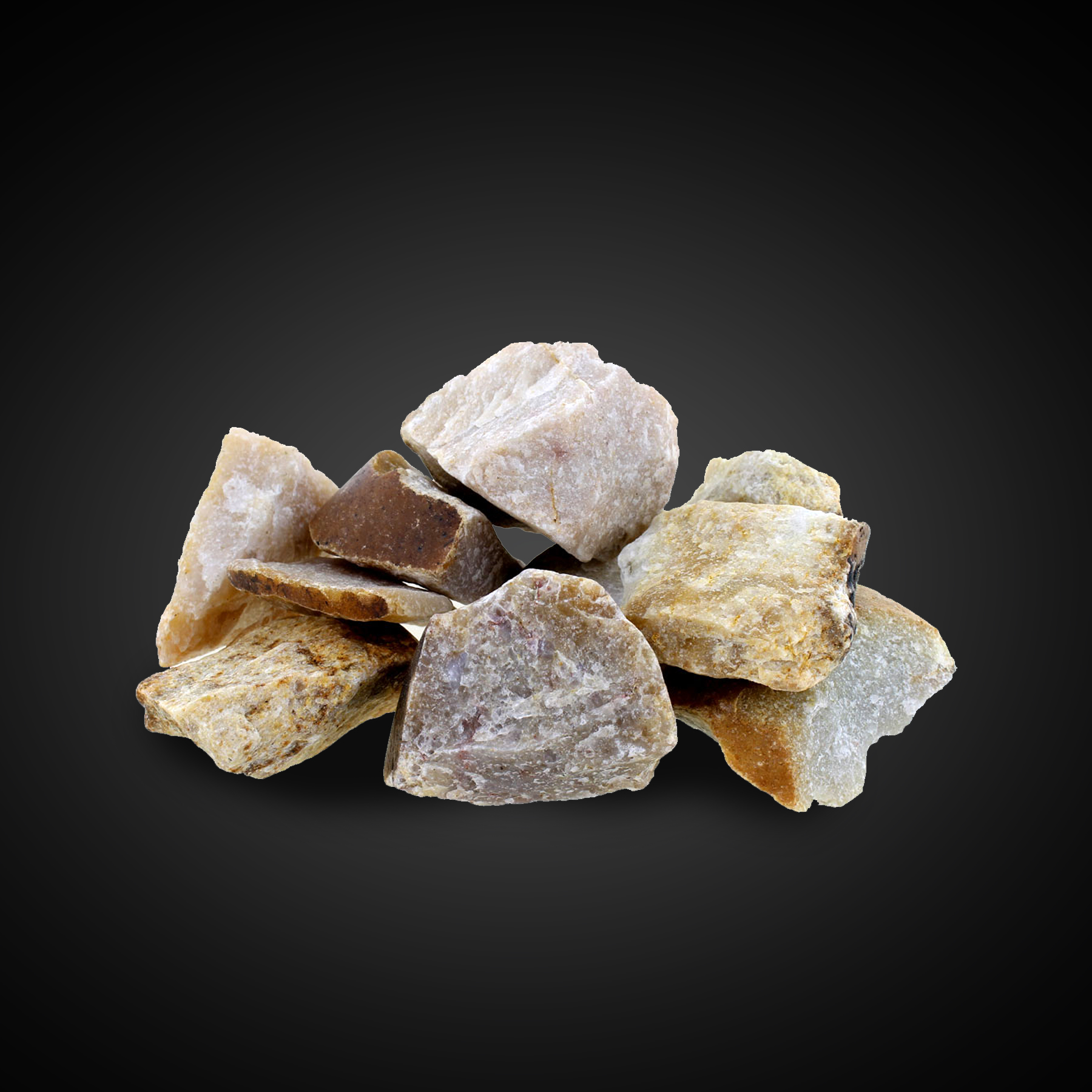Quartzite Mineral
The parent rock for quartzite is quartz-rich sandstone. As sandstone becomes deeply buried, rising temperature will fuse the quartz grains together forming the extremely hard and weather-resistant rock quartzite. Like marble, quartzite comes in many colours, but when pure it is light-coloured. Quartzite tends to have a sugary appearance, and when broken the fractures cut through the sand grains, not around them as with a sandstone.


- Specifications
| SPECIFICATIONS | QUARTZITE |
| SiO2 | Min. 97% |
| AL2O3 | Max. 1% |
| Size | 10 – 40 MM |
| Moisture | Max 2% |
- Uses of Hydrated Lime
Quartz is an important mineral with numerous uses. Sand, which is composed of tiny Quartz pebbles, is the primary ingredient for the manufacture of glass. Transparent Rock Crystal has many electronic uses; it is used as oscillators in radios, watches, and pressure gauges. Quartz is also used as an abrasive for sandblasting, grinding glass, and cutting soft stones.
Quartz is important in the production of soaps and ceramics. Transparent Rock Crystal is used in the study of optics. Quartz is essential in the computer industry, for the all-important silicon semiconductors are made from Quartz.
Beside for all these practical uses, Quartz is important in the gem trade. Many varieties are faceted as gems, and some are well known. Amethyst is the most popular Quartz gem, and Citrine is the most valuable. Rose Quartz, Smoky Quartz, Rock Crystal, and Aventurine are also cut into gems. Clear Quartz crystals are worn by some as pendants for good luck.
